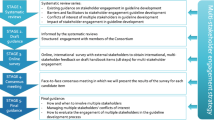Abstract
Benefit-risk (B-R) assessments inform decisions regarding drug development and lifecycle management, serve as a basis for regulatory determinations, and help clinicians, patients, and payers make rational, value-based treatment decisions. Nevertheless, no widely accepted, systematic methods exist to guide, justify, and communicate benefit-risk decisions in a transparent and consistent manner. The B-R Action Team (BRAT), formed by the Pharmaceutical Research and Manufacturers of America (PhRMA), has developed a structured approach to B-R assessment—the “BRAT Framework”—that assists decision makers in selecting, organizing, summarizing, and communicating evidence relevant to B-R decisions. The BRAT Framework’s functionality has been demonstrated previously in a series of scenarios with hypothetical drugs as well as in a few real-world applications. Here we report results of a pilot program to assess the value of the Framework in pharmaceutical development and postmarketing settings, for the purpose of informing PhRMA’s regulatory advocacy. A third-party consultant conducted the assessment through a survey of pharmaceutical companies’ experiences using the Framework. We also identify aspects of the Framework that require further development.
Similar content being viewed by others
References
Committee on the Assessment of the US Drug Safety System, Baciu A, Stratton K, Burke SP, eds. The Future of Drug Safety: Promoting and Protecting the Health of the Public. Washington, DC:The National Academies Press; 2007.
Breckenridge A. Regulatory challenges, reimbursement, and risk-benefit assessment. Clin Pharmacol Ther. 2010;88(2):153–154.
Coplan PM, Noel RA, Levitan BS, Ferguson J, Mussen F. Development of a framework for enhancing the transparency, reproducibility and communication of the benefit-risk balance of medicines. Clin Pharmacol Ther. 2011;89(2):312–315.
Levitan BS, Andrews EB, Gilsenan A, et al. Application of the BRAT framework to case studies: observations and insights. Clin Pharmacol Ther. 2011;89(2):217–224.
Walker S, McAuslane N, Liberti L, Salek S. Measuring benefit and balancing risk: strategies for the benefit-risk assessment of new medicines in a risk-averse environment. Clin Pharmacol Ther. 2009;85(3):241–246.
Brass EP, Lofstedt R, Renn O. Improving the decision-making process for nonprescription drugs: a framework for benefit-risk assessment. Clin Pharmacol Ther. 2011;90(6):791–803.
The European Medicines Agency. Benefit-Risk Methodology Project. https://doi.org/www.ema.europa.eu/docs/en_GB/document_library/Report/2011/07/WC500109477.pdf. Published March 2009. Accessed March 12, 2012.
CIRS. Benefit-risk assessment. https://doi.org/cirsci.org/benefit-risk. Accessed April 1, 2012.
Innovative Medicines Initiative. Protect. https://doi.org/www.imi.europa.eu/content/protect. Published 2010. Accessed May 27, 2012.
PDUFA reauthorization performance goals and procedures fiscal years 2013 through 2017. https://doi.org/www.fda.gov/downloads/forindustry/userfees/prescriptiondruguserfee/ucm270412.pdf. Published 2012. Accessed August 16, 2012.
Koberstein W. Janet Woodcock—CDER, safety, and the cutting edge. https://doi.org/www.lifescienceleader.com/magazine/past-issues3/item/3827-janet-woodcock-%E2%80%94-cder-safety-and-the-cutting-edge. Accessed August 16, 2012.
FDA working with patients to explore benefit/risk: opportunities and challenges. Meeting notice. https://doi.org/www.fda.gov/ForConsumers/ByAudience/ForPatientAdvocates/ucm298136.htm. Accessed April 16, 2012.
Cardiovascular and Renal Drugs Advisory Committee for rivaroxaban. https://doi.org/www.fda.gov/downloads/AdvisoryCommittees/CommitteesMeetingMaterials/Drugs/CardiovascularandRenalDrugsAdvisoryCommittee/UCM272005.pdf. Published September 2011. Accessed April 1, 2012.
Markowitz M, Levitan B, Jing Fu D, et al. Benefit-risk assessment of maintenance therapy in schizophrenia comparing long-acting injectable (LAI) paliperidone palmitate with paliperidone ER. Presented at: Annual Meeting of the American Psychiatric Association; May 16, 2011; Honolulu, HI. Abstract NR06-39.
Holden WL, Juhaeri J, Dai W. Benefit-risk analysis: a proposal using quantitative methods. Pharmacoepidemiol Drug Saf. 2003;12(7):611–616.
Author information
Authors and Affiliations
Corresponding author
Rights and permissions
About this article
Cite this article
Noel, R., Hermann, R., Levitan, B. et al. Application of the Benefit-Risk Action Team (BRAT) Framework in Pharmaceutical R&D: Results From a Pilot Program. Ther Innov Regul Sci 46, 736–743 (2012). https://doi.org/10.1177/0092861512458908
Received:
Accepted:
Published:
Issue Date:
DOI: https://doi.org/10.1177/0092861512458908




